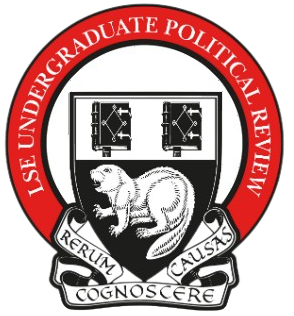Britain has officially left the European Union at the start of 2020 after four years of chaotic arguments. Many saw this as a culmination of the EU crises. Tanja A. Börzel and Thomas Risse shared this perspective in their 2018 paper “From the euro to the Schengen crises: European integration theories, politicization, and identity politics”. From the Euro Crisis in 2010 to the Schengen Crisis starting from 2015, the concept of the European Union has been stuck in controversial debates. During such a volatile moment for the EU, Börzel and Risse are attempting to revise the traditional theories around European integration and offer explanations for different outcomes of the two crises.
As two of the most fundamental efforts in the process of Integration back in the 1990s, both Euro and Schengen zone had been exposed to various internal and external pressure that resulted in the eventual crisis. The Euro Crisis eventually resulted in a more cohesive and united Europe, whereas the Schengen Crisis has not. The varying outcomes of the two crises suffered by the EU’s fundamental designs deserve more attention. The European Union has reached an extremely volatile stage in the post-Brexit context. In the paper, the authors are trying to account for the different outcomes of the crisis that the EU has faced over the past decade. They are forming an argument around politicization and identity politics’ impact on EU issues. Four steps were conducted to achieve that: the conceptualization of politicization and identity politics within the European Union; the discussion of ‘dependent variables’ as in different outcomes from the past two crises; the description of the inability of current theories to explain these differences; eventually the authors’ insight into this argument is introduced.
The politicization of the European Union has been defined on three dimensions (Börzel & Risse, 2018):
Increasing issue salience of European affairs in the various public domains;
Increasing levels of polarization pertaining to the EU in general, EU institutions, or EU policies;
Increasing mobilization and expansion of actors in the various public domains.
Along these three dimensions, three traditional theories have been applied to the context of politicization and discussed by the authors: liberal intergovernmentalism, neofunctionalism, and postfunctionalism. Liberal intergovernmentalism and neofunctionalism have demonstrated a certain level of similarity. They both see the effective governance by EU institutions as a result of the depoliticization from the domestic political context (Börzel & Risse, 2018). Therefore, these theories imply the strengthening of European integration as domestic politicization increases. On the contrary, the postfunctionalists proclaims that such domestic politicization hinders rather than facilitates the progress of European integration. “Permissive Consensus”, which refers to the situation where citizens trust and are willing to allow the politicians and elites to delegate power to the EU, no longer exists.
Then, the issue of identity was discussed. The contrast between those identified with their nation-state and those with the EU has been shown. Neither the liberal intergovernmentalist nor the neofunctionalist saw these national identities mobilized against the EU, as what happened during the two crises. The authors agree with what Hooghe and Marks brought out in 2009, their postfunctionalist GAL/TAN model provides a basis to account for European’s various attitudes toward the refugee inflow in 2015.
After settling these fundamental theories, the authors introduced their insufficiency at explaining the different outcomes of the Euro and Schengen crises. While the former resulted in the empowerment of supranational institutions such as the ESM (European Stability Mechanism), the Schengen Crisis produced a chaotic and non-compliant situation as member states sought their national solutions.
For liberal intergovernmentalism, its premises for further integration are present in both crises: the common preference for avoiding welfare loss by negative interdependence. As the member states could not afford the collapse of the Euro, neither can they accept the demise of the Schengen agreement. Thus, Börzel and Risse argue that this theory is ill-suited to explain such a situation. What about neofunctionalism? They emphasized the importance of transnational pressure groups and supranational entrepreneurship in completing a solution for the Euro Crisis. Nevertheless, the functional pressure for a centralized EU-wide relocation plan has been strong during the Schengen Crisis as well. Although the ECB (European Central Bank) played a significant role in the Euro Crisis, it was the member states themselves who choose to further integrate the monetary and fiscal policies. Thus, the authors deemed neofunctionalism incomplete in explaining different outcomes.
Börzel and Risse acknowledge postfunctionalism’s explanation of the Schengen Crisis. As the mass Eurosceptic public opinion constrained elites’ ability to reach a common agreement. But it lacked the explanation for the integration results of the Euro Crisis.
The authors argue that the sequence of the events mattered. The depoliticization efforts made by the EU elites eventually backfired in the Schengen Crisis due to the increase of politicization of EU issues during the years. They claim that the Euro Crisis ended with more integration as the citizens saw these measures as helping “one of us”. Whereas they saw the influx of refugee migrants as “one of them” (Börzel and Risse, 2019). Citizens’ awareness of these salient issues has forced national leaders to devise national solutions, rather than conforming to a politically dangerous “European plan”. Public opinion polls and data set regarding politicization were obtained and applied to support their statements (Rauh & Zürn, 2016; Grande & Kriesi, 2016).
Nevertheless, as the paper itself acknowledges, the mass public opinion towards the EU has not changed by much, it might be inaccurate to make such a prediction that the politicization induced more Eurosceptic views. Moreover, the foreign impact from the U.S., Russia, and even Turkey needs to be taken into account. A scope that focuses within the EU might lack some insights as both crises played out to be international fiascos. Moreover, it is worth finding the root of the problem from the fundamental of the EU. The lacking a European Constitution to guide on such policy formation could have played a vital role in it. Therefore, more researches shall be carried out to accompany the findings in this paper.
Despite the few misgivings mentioned above. This paper provides implications for future European public policy formation as well as the European integration process itself. As identity politics becomes dominant in the EU member states, it is crucial to alter the traditional theories and acknowledge this trend. With public debates no longer silenced, maybe the EU has been offered a chance to transform into a more democratic and federal-like institution.




